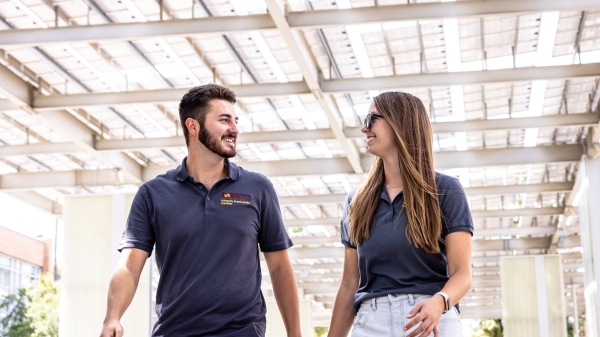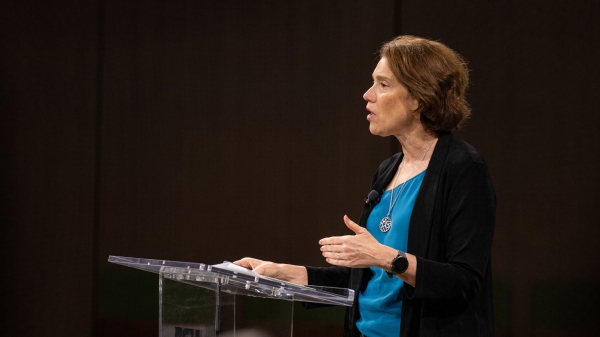NOAA, ASU offer workshop to bridge ocean exploration, education

ASU Foundation Professor Vernon Morris highlights the critical role oceans play in regulating the Earth's climate and ecosystem health. Photo by Danielle Castillo/ASU
Oceans are vital to sustaining life on Earth, as they produce over half of the oxygen we breathe and play a crucial role in regulating the planet's climate. They also support a diverse array of marine ecosystems that provide food, livelihoods and recreational opportunities for millions of people worldwide.
This interconnectedness was the focus of a recent workshop aimed at empowering educators in Arizona to integrate ocean science into their classrooms, despite being far from the coast.
Earlier this month, elementary and secondary school educators from across the state gathered at the Arizona Science Center for a daylong professional development workshop organized by Arizona State University in collaboration with the National Oceanic and Atmospheric Administration (NOAA) and APS.
The goal of the workshop was to empower teachers with the knowledge and tools to integrate ocean literacy and ocean exploration content into their classrooms, offering a unique opportunity to bring the mysteries of the deep sea to Arizona students.
The workshop began with a presentation on NOAA’s mission, emphasizing the critical role of ocean exploration in scientific advancement and environmental sustainability. A standout presentation was delivered by ASU Foundation Professor Vernon Morris, associate dean for knowledge enterprise and strategic outcomes at ASU’s New College of Interdisciplinary Arts and Sciences.
“Two-thirds of our planet is covered by an ocean," Morris said. "We often geographically separate things, but it's really just one ocean covering the majority of Earth. In fact, it's more than two-thirds, and with sea level rise and melting ice caps, it is threatening to cover even more surface area because of the way we treat our planet.
"Recognizing that we live on a ‘water planet’ is crucial for sustainability and understanding how we should relate to Earth as a system. Additionally, we are literally sitting on a former ocean floor — our past and future are deeply tied to the ocean.”
Throughout the workshop, educators participated in interactive sessions designed to increase their confidence in teaching ocean science. Activities included exploring modern methods of ocean exploration, such as underwater technology, including sonar and thermal imaging, and studying hydrothermal vents and other deep-sea ecosystems. These lessons were aligned with Next Generation Science Standards (NGSS) and ocean literacy principles, making them immediately adaptable for classroom use.
Morris highlighted NOAA’s efforts in environmental monitoring and disaster preparedness, showing educators how these concepts can be linked to career opportunities for their students. He also spoke about the ocean's relationship to the food chain.
“The food chain starts in the ocean," Morris said. "The ocean is also the largest regulator of climate. It’s not just about how much CO2 we emit into the atmosphere; it’s about how much the ocean can absorb. As more CO2 is absorbed, it acidifies the ocean and damages the food chain. Pollution in rivers and coastal areas runs into the ocean, further harming fragile but critical ecosystems. If we damage these foundations of our existence, the future dims.”
In addition to expanding their ocean science knowledge, educators benefited from a $500 stipend for their participation. They also gained access to valuable online resources from NOAA, as well as opportunities to expand their professional networks, fostering continued collaboration long after the workshop ended.
Many participants expressed eagerness to apply what they had learned in their classrooms. Looking ahead, Morris says he is optimistic about expanding the program, with plans to offer similar workshops on a more regular cadence. He believes scaling the initiative is not only feasible but necessary, given the demand from educators.
More Environment and sustainability

10 climate insights to guide our future
A group of globally renowned social, natural and climate scientists has once again convened to offer their newest annual synthesis report, “10 New Insights in Climate Science.”The report, published…

The future is green: Job demand translates to high employability for ASU sustainability grads
A 2023 report by Forbes on the state of green jobs confirmed what Arizona State University has been trumpeting for years: Sustainability will play a large part in the new economy.The report suggests…

Researcher works on changing people's mindsets to fight climate change
Meaningful action to heal the climate requires a complete shift in the way people think and perceive each other, according to an expert on social transformation who spoke at Arizona State University…